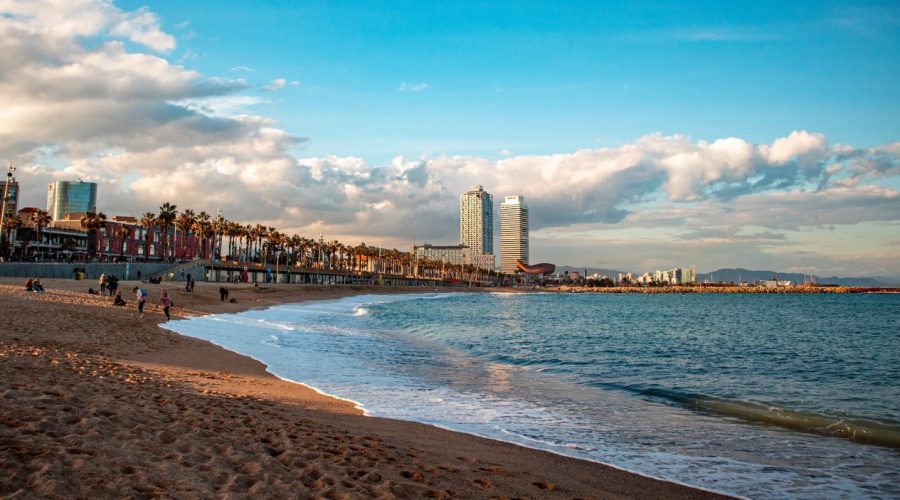The Fascinating History of the Docklands: From Trade Hubs to Vibrant Urban Spaces
The links we conjure up in our minds today with the word docklands are usually busy, redeveloped waterfronts, present day building, and lively sociable spaces.
But even these vital cities have their alive and fascinating pasts dates back centuries. In this article, we
will investigate the historical shift of docklands, from early days of dockland as markets to their growth to
iconic destinations. So, let’s dive in!
1. The Birth of Trade Hubs
The history of docklands starts with the growth of foreign trade in the middle ages. As seafaring nations
wished to dramatically increase their strata of dominion and richness, they established circumspect ports and harbors wherein ships could portage and
unload goods.
One of the first of above example of the thriving dock land was The Port of London, which was started in the time of Romans but genuinely
flourished in the 17th and 18th centuries. It became the funnel premise for goods to England to be drawn to and originating.
General warehouses and quays were constructed to keep pace with increasing trade.
2. Industrial Revolution and Expansion
The coming of the Industrial Revolution in the 18th century changed the docklands forever. The development
by steam-powered machinery and growing non agricultural demand had altered these regions into major industrial
centers.
The west India docks were built in London’s docklands in only a few years (1802) followed by the east India.
Docks (1806). These docks, which feature latest technology in getting loading and charging cargo, positioned London
into the heart of global trade.
Likewise, elsewhere in the world, other cities had their own high point(s) of their own bustling docklands, during this period of industrial
growth. Liverpool’s Albert Dock, finished in 1846, became another leading intermediary between the Atlantic trade towns and Liverpool;
Inner Harbor grew to become commercial center.
3. Decline and Regeneration
It was into the late 20th century that docklands had a to deal with with changing wide availability and ways of shipping. The
Appearance of containerization and modern ships made some of the older docks redundant.
London’s docklands had a particular challenge to overcome, with many docks closing down in the 1960s and 1970s. These areas were
underlain by unemployment, dereliction and a atmosphere of abandonment.
However, from the late 20th century docking areas out there underwent the showstopping change. Urban planners and
developers would identify potential for redevelopment and regeneration on such vast waterfront spaces.
4. Docklands Today: Revitalized Urban Spaces
Today, doctrine is transformed into an very lively urban place that promptly balanced historical traces and contemporary
architecture and amenities. We will be taking a look at some of the largest dockland redevelopments worldwide today:
4.1 London Docklands
The London Docklands was transformed on a massive scale in the 1980s and 1990s. The space that is nowadays known as Canary Wharf,
once a bustling harbor, now is the world best financial center with high-rise buildings as headquarters of major
corporations.
Other parts of London Docklands e.g. Greenwich and Docklands Museum hold historical legacy.
offers a little history of the area.
4.2 Sydney Darling Harbour
Sydney’s Darling Harbour also achieved a similar transformation and became a favourite spot for locals and tourists. The
area to house a vibrant entertainment area, museums, shopping and restaurants and is drawing in millions of tourists
annually.
4.3 Boston Seaport
Boston’s Seaport District has evolved into a lively neighborhood of sleek apartments, lively culture and
and a bustling waterfront. Revitalization of the area has converted it into a thriving technology, innovation, and
entrepreneurship.
5. Discover the Beauty of Docklands
Come you are in search of historical grace, contemporary architecture, or sensational culture, than discuss.
docklands is a must. These vibrant areas are an insight to what went before as they head for the future.
Make sure you have a look at docklands in your area and around the world. You might find secret treasures, special tales,
and a renewed appreciation for these vibrant waterfront spaces.
Conclusion
The history of the docklands mirrors the importance they held and continue to hold in the global trade and industrial evolution. From their
since their origins as trading centers to their modern renaissance, these regions have undergone extensive transformation
over time.
Looking at the history and re-generation of docklands gives a great example from an urban development, architecture point of view.
and cultural renewal. Nxt time, you see a dockland, be grateful for it!
of past and present of these enchanting rooms.
Table of Contents



